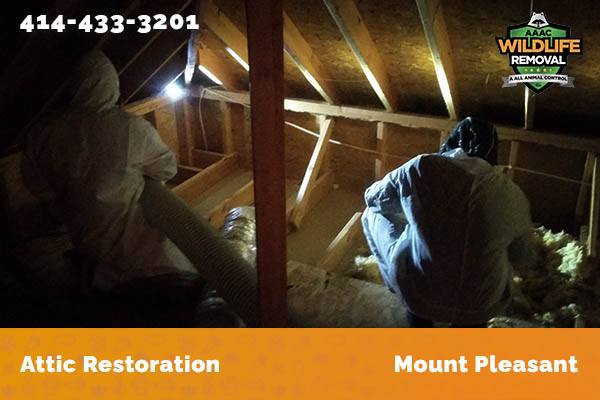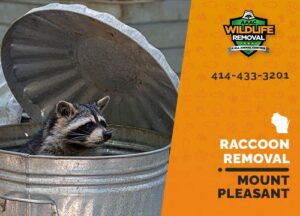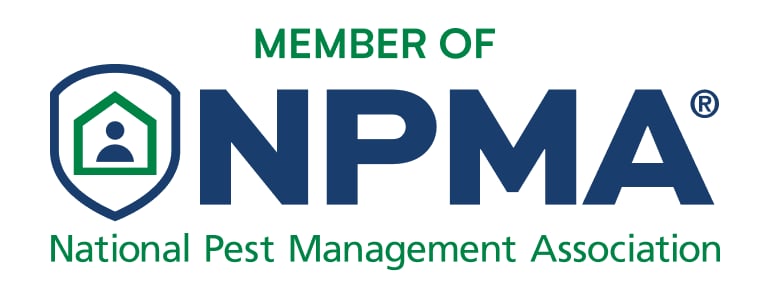Areas We Serve
Our certified raccoon removal specialists help homeowners get rid of raccoons throughout Mount Pleasant Arizona and surrounding communities. Emergency response teams are available 24/7 to address urgent situations including raccoon in the attic problems across our extensive service territory.
We proudly serve the following Mount Pleasant area communities: Caledonia, Racine, Oak Creek, Sturtevant, Wind Point, Elmwood Park, North Bay, Yorkville, Burlington, Union Grove

Our Humane Raccoon Removal Process
Professional wildlife control follows a systematic four-step approach that prioritizes animal welfare while ensuring complete property protection. A licensed wildlife control specialist will use proven methods that comply with Arizona state regulations and ethical wildlife management standards.
Inspection & Assessment
Certified technicians conduct thorough property evaluations to identify active raccoon presence, entry points, and damage assessment. Digital cameras and thermal imaging equipment help locate hidden nests in attics, crawl spaces, and wall cavities where raccoons commonly establish a den.
Documentation includes photographing droppings, tracks, and structural damage to create detailed removal plans tailored to each property’s specific needs.
Safe Humane Trapping Methods
Live cage traps measuring 36x12x14 inches accommodate adult raccoons safely without causing injury or stress. One-way exclusion doors allow raccoons to exit structures naturally while preventing re-entry, reducing handling requirements.
Bait selection includes marshmallows, cat food sources, and sweet corn strategically placed to attract target animals while avoiding non-target species capture.
Removal & Relocation
Captured raccoons are transported in ventilated carriers to approved relocation sites minimum 10 miles from capture locations per Arizona Game and Fish Department guidelines.
Release occurs during daylight hours in suitable habitat areas with adequate water sources, shelter options, and natural food availability. All relocations are documented with GPS coordinates and animal condition reports for regulatory compliance.
Exclusion & Prevention
Long-term raccoon control requires comprehensive property modifications that eliminate access points and attractants. Professional repair work combines structural fixes with environmental changes to create raccoon-resistant properties.
Sealing Entry Points – Common raccoon entry points include roof vents, chimney openings, attic fans, and damaged soffit areas measuring 4 inches or larger in diameter.
Professional-grade materials like galvanized steel mesh, expanding foam sealants, and metal flashing create permanent barriers that withstand weather and animal pressure. Installation occurs after confirming no animals remain inside structures to prevent accidental entrapment.
Habitat Modification – Property modifications include securing trash cans with bungee cords, removing fallen fruit from trees, and eliminating water sources near foundations.
Trimming tree branches 8-10 feet from rooflines prevents raccoon access routes to upper-level entry points. Motion-activated lighting and removing pet food from outdoor areas reduce attractants that draw raccoons to residential properties.
Signs of a Raccoon Infestation
Raccoons leave distinctive evidence of their presence that homeowners can identify through visual, auditory, and physical indicators. Early detection prevents extensive property damage and reduces health risks associated with prolonged wildlife occupation.
1. Nocturnal Sounds in Attics and Walls – Heavy footsteps, scratching, and chattering sounds occur primarily between dusk and dawn when raccoons are most active. These noise are distinctly louder than squirrel or bird activity due to raccoons’ larger size and weight ranging from 14-23 pounds.
2. Distinctive Droppings and Urine Stains – Raccoon feces measure 2-3 inches long with blunt ends and often contain visible food remnants like seeds or insect parts. Fresh droppings appear dark brown to black, while older specimens fade to gray and may create concentrated latrine areas.
3. Visible Paw Prints and Track Patterns – Raccoon tracks display five distinct toes on both front and hind feet, resembling small human handprints measuring 3-4 inches long. Front paw prints show longer, more dexterous fingers used for manipulating objects and opening containers.
Did you know that Raccoons have very sensitive hands that almost act as a second set of eyes?
4. Property Damage and Torn Materials – Shingles, soffit panels, and vent covers show claw marks, bite damage, or complete removal where raccoons force entry. Insulation appears flattened or displaced in areas where raccoons create nests or travel routes through attic spaces.
5. Overturned Garbage Cans and Scattered Trash – Raccoons possess remarkable dexterity that allows them to remove tight-fitting lids and manipulate latches on garbage containers. Scattered food waste, particularly items like corn cobs, fruit peels, and pet food, indicates raccoon feeding activity.
6. Strong Ammonia-Like Odors – Concentrated urine deposits create persistent ammonia smells that intensify in enclosed spaces like attics or crawl spaces. These odors become more noticeable during hot weather when evaporation increases and may indicate established raccoon infestation sites.

Dangers & Damages Caused by Raccoons
Raccoons pose significant health risks and cause thousands of dollars in property damage through their destructive behaviors and disease transmission. Understanding these hazards helps homeowners recognize the urgency of professional raccoon removal services.
Disease Transmission Risks
Raccoons carry over 30 different pathogens including rabies, raccoon roundworm (Baylisascaris procyonis), and leptospirosis that can transmit to humans and pets. Raccoon roundworm eggs remain viable in soil for years and cause severe neurological damage when accidentally ingested through contaminated surfaces.
Structural Property Damage
Adult raccoons weigh 14-23 pounds and use their powerful claws to tear through roofing materials, siding, and wooden structures to gain entry. Repeated traffic through entry points enlarges openings, allowing water infiltration that leads to rot, mold growth, and compromised structural integrity.
Electrical Fire Hazards
Raccoons frequently chew electrical wiring while nesting in attics, creating exposed conductors that can spark house fires. The National Fire Protection Association reports that animal-related electrical failures cause approximately 13,000 house fires annually across the United States.
Insulation Contamination and Replacement Costs
Raccoon urine and feces saturate attic insulation, reducing thermal efficiency by up to 40% and creating persistent odors. Contaminated insulation requires complete removal and replacement, with costs ranging from $2,500 to $7,000 depending on home size and accessibility.
Lawn and Garden Destruction
Raccoons dig holes in lawns searching for grubs and insects, creating unsightly damage that weakens grass root systems. Garden raids destroy vegetable crops, ornamental plants, and fruit trees, with raccoons consuming or damaging produce worth hundreds of dollars per season.
Secondary Pest Infestations
Raccoon droppings and food caches attract flies, beetles, and other insects that establish secondary infestations in homes. Parasites like fleas and ticks from raccoon fur can spread throughout properties, requiring additional pest control treatments.

Schedule Your Raccoon Removal Inspection Today
Raccoon infestations worsen rapidly, causing escalating property damage and increasing health risks for Mount Pleasant families. Delaying professional removal allows these destructive animals to establish larger colonies and create more extensive contamination. Every day without intervention means higher repair costs and greater exposure to dangerous diseases.
Don’t let raccoons turn your home into their permanent residence. Professional inspection identifies problems early and provides immediate solutions forwildlife conflicts. Call now for same-day service and protect your Mount Pleasant property from further raccoon damage.
Frequently Asked Questions About Raccoon Removal Mount Pleasant AZ
What should I do if I spot a raccoon in my attic?
Immediately contact licensed wildlife control professionals and avoid attempting DIY removal, as cornered raccoons become aggressive and may attack when threatened.
Never seal entry points while raccoons remain inside, as trapped animals will cause extensive damage trying to escape and may die, creating serious odor and health hazards.
How quickly can you remove raccoons from my property?
Professional raccoon removal typically takes 3-7 days depending on colony size, entry point locations, and weather conditions affecting trapping success.
Emergency situations involving aggressive animals or immediate health threats receive same-day response with initial assessment and trap placement within 2-4 hours of contact.
Is raccoon removal safe for pets and children?
Licensed wildlife control specialists use humane trapping methods and pet-safe exclusion materials that pose no risk to family members or domestic animals.
Professional removal techniques include securing trap locations away from children and pets, plus providing detailed safety instructions for homeowners during the removal process.
Other Services in Mount Pleasant
Mount Pleasant
About Mount Pleasant
Mount Pleasant is a village in Racine County, Wisconsin, United States. It is located approximately 30 miles south of Milwaukee and 60 mi north of Chicago. As of the 2010 census, the village’s population was 26,197. Wikipedia









